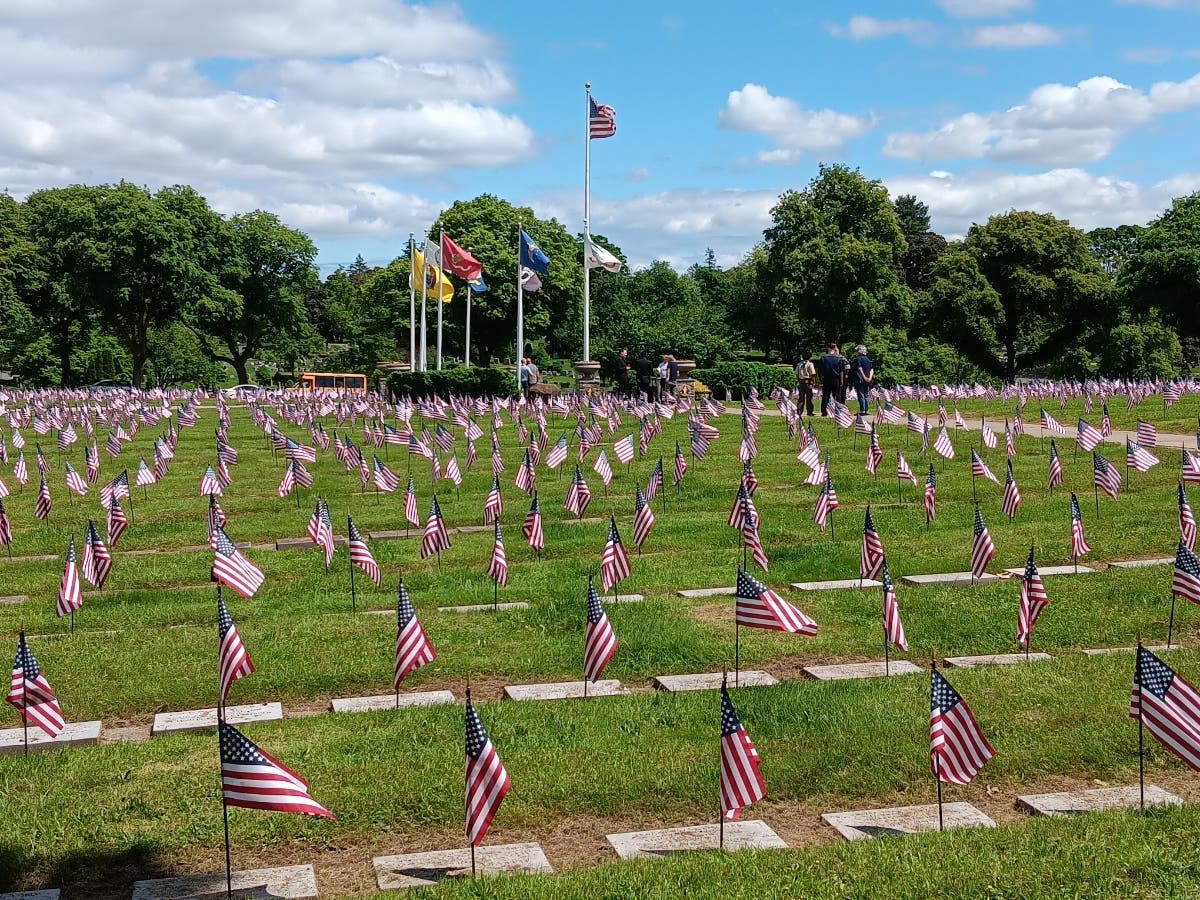
Common Sense in Grief: Navigating New Cemetery Regulations
The promise of a compassionate approach was voiced recently by the leader of Broxtowe Borough Council, Milan Radulovic, addressing a growing concern among families regarding new restrictions on grave tributes. Set against a backdrop of heartache and remembrance, this issue has ignited a passionate debate over the meaning of respect and dignity in cemeteries.
A Controversial Move
In July 2023, a cabinet decision was made to enforce stricter rules regarding what can be placed at gravesites, citing maintenance difficulties and health and safety as the foundation for these changes. With a firm deadline set for January 23, 2025, families are faced with the daunting prospect that unofficial decorations and memorials will be dismantled and removed by council maintenance teams.
The decision has not been taken lightly. In a recent meeting at Bramcote Crematorium, families representing the petition titled Save our Cemetery Gardens and Memorials expressed their discontent. Over the course of just one week, this petition garnered close to 1,000 signatures, highlighting a palpable community sentiment against what they perceive as an erosion of their rights to honor their loved ones.
 Tributes left at a cemetery representing love and remembrance.
Tributes left at a cemetery representing love and remembrance.
Radulovic’s attempt to foster dialogue comes as a response to the growing frustration felt by families, particularly those with children buried in the local cemeteries. Lindsey Collins, who lost her son, Josh, in 2021, articulated the anguish caused by the abrupt nature of these rule changes. She presented an updated Notice of Interment form, highlighting a stark shift in the council’s policy. The form now strictly prohibits items such as fencing, vases, and even personal mementos, with clear indications that these will be removed without notice.
Striking a Balance
Communications between the council and grieving families appear to be strained. As Radulovic put it, “there has been a trend over the last few years of putting some things that I think violate the consecrated ground.” While advocating for “common sense” solutions, he also emphasized the need for collective respect—not only for individual graves but for the hallowed ground that serves as a sanctuary for all departed.
This tension raises critical questions about the nature of grief and memorialization. What does it mean to create a space of memory and love amidst regulations designed for order and safety? The families’ outcry reflects a deeper societal issue: the need for open dialogue in the face of bureaucratic decisions impacting deeply personal experiences.
 Families gather to discuss their grief and concerns over cemetery rules.
Families gather to discuss their grief and concerns over cemetery rules.
Trauma in Traditions
The emotional toll on families cannot be overstated. Lindsey Collins shared heart-wrenching sentiments—“I don’t understand how the council could change the rules because they’ve always accepted this.” This reflects a broader fear that the removals won’t merely be physical but will strip away the symbolic gestures of love and grief that families use to express connection to their departed.
Lesley Webb, another affected family member, wishes to create a resting place for the ashes of her husband, who passed away earlier this year. The new regulations deny her the ability to include a memorial stone—further perpetuating the perception that the council’s rules are disproportionate to the sensitivities surrounding memorialization. Webb proposed a so-called three-strikes rule, suggesting that families who are able to maintain their graves should not be penalized for neglect of others.
A Path Forward
Understanding and empathy have become essential in confronting these sensitive changes. After meetings with grieving families, Radulovic expressed a willingness to engage in further discussions, asserting his dedication to finding common ground. “Come and see me, and we will sit around a table,” he urged. This openness may pave the way for resolutions that honor both public zoning laws and the emotional realities of memorial practices.
Essentially, the challenge lies in balancing health and safety regulations with the deep emotional bonds families have with those they’ve lost. The call for more communication between the bereavement services department and families is a crucial step towards healing; it opens avenues for understanding that policies can be flexible enough to accommodate varied individual needs within a shared communal space.
An example of a well-maintained burial site reflecting personal tributes.
Conclusion: Embracing Compassion and Understanding
The recent unrest regarding cemetery rules in Broxtowe is not just about grave decorations; it’s about the integrity of the grieving process itself. It emphasizes the importance of sensitivity and respect in creating places for reflection and remembrance, especially as we navigate regulations that seem to disregard individual mourning practices.
Milan Radulovic’s assurance of a “common sense” approach, alongside the growing advocacy from families, may lead to a more inclusive framework that recognizes grief as a nuanced experience requiring thoughtful consideration. As this dialogue unfolds, it invites us all to reflect on how we honor those we have lost and the spaces we create to keep their memories alive.















